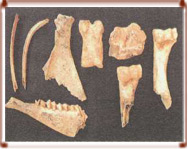Ancient Ruins of Kharakhorum City, Mongolia
© UNESCO 1998
Hosting Government: Government of Mongolia
Project duration: July 1995- December 1998Total project budget: US$ 450,500
The ancient city of Kharakhorum, built in the thirteenth century by Qubilai Khan to rule the entire "universe", was the seat of the Mongolian Empire. Today, the site is covered with unfilled trenches resulting from unprofessional attempts to excavate the area.
The ruins of the city have almost disappeared, leaving only a few signs of its existence on the ground. Since most of these remains are buried, a well-planned archaeological survey is planned for future restoration of the site. The Japanese Trust Fund project aimed at zoning the ancient city and producing an updated master plan. These activities were undertaken through a geophysical survey and a small-scale archaeological survey.
After the evaluation meeting in the summer of 1997, during which a large-scale archaeological survey was proposed and an urgent preliminary measure adopted, a wooden fence was erected to protect the site. Following that decision, the existing farmland, roads and factories in the area were relocated outside the site.
(Extract from "Preservation of Cultural Heritage through the UNESCO/Japanese Trust Fund" p.14)
Links:
Latest Publication on the International Cooperation through the UNESCO/Japanese Funds-in-Trust (
pdf, 2.91MB)
Second publication (2003) concerning the Japanese Funds-in-Trust Preservation of Cultural Heritage (
pdf, 2.29MB)
First publication concerning the Japanese Funds-in-Trust Preservation of Cultural Heritage (1998) (
pdf, 5.92MB)
Back to : The Japanese Funds-in-trust for the Preservation of World Cultural Heritage
Legal Matters | About Accessibility | Privacy Policy
Copyright : 2013 Permanent Delegation of Japan to UNESCO
